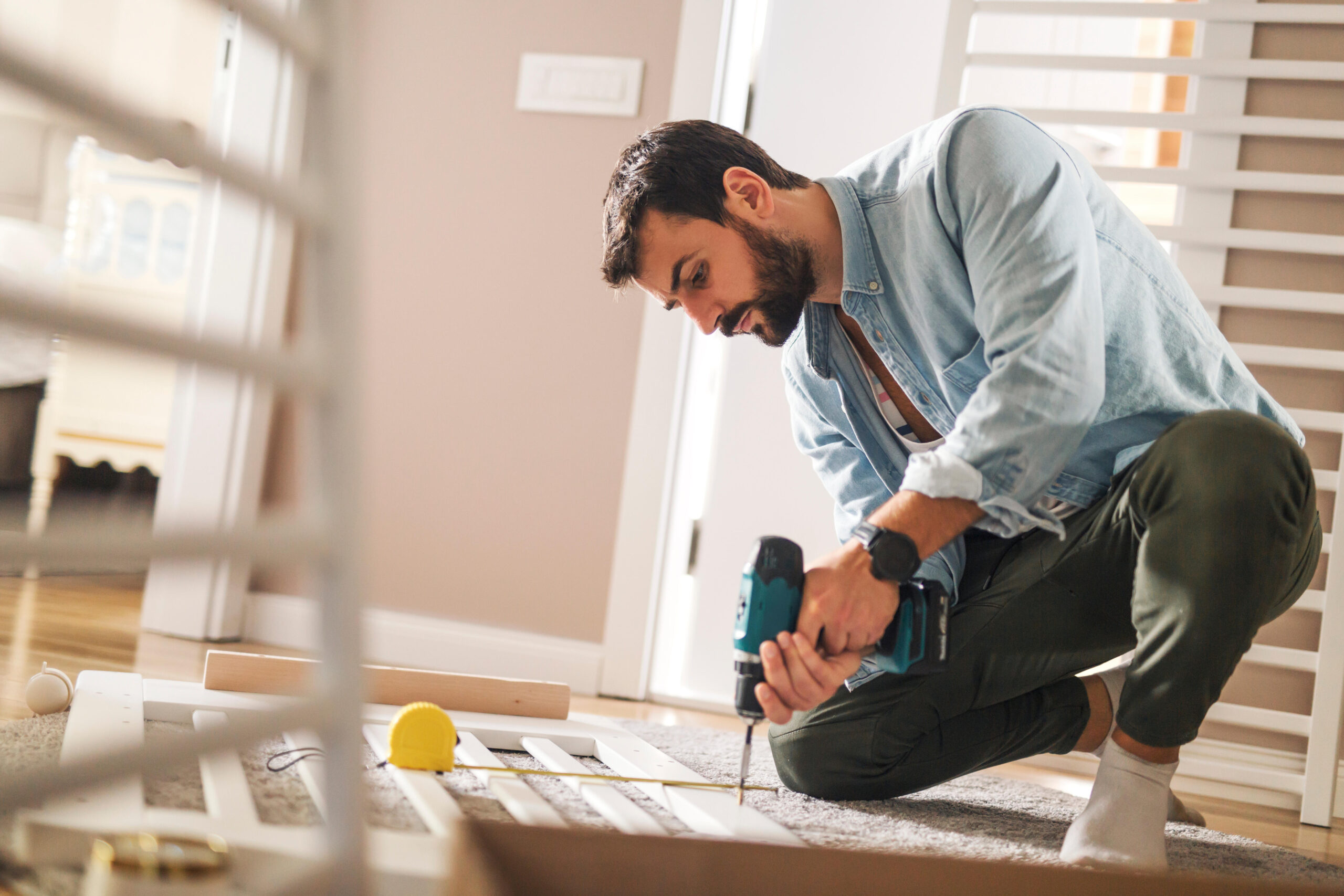When something breaks at home, the first instinct is often to call in a professional—but doing that every time adds up quickly. The truth is, many common home repairs are simpler than they seem. With a little time, some basic tools, and a few YouTube videos, you can take care of a wide range of problems yourself. Doing your own home maintenance not only saves you money on service calls—it also helps prevent small issues from turning into costly disasters. Learn how to tackle easy fixes, what tools to keep on hand, and when to call in the pros.
Why DIY Home Maintenance Makes Financial Sense
Even small repair jobs come with big price tags. Hiring a handyman might cost $75–$100 an hour, and specialized services like plumbing or electrical work can be even higher. Add in travel fees, parts, and markups, and suddenly that leaky faucet becomes a $200 job.
Doing basic repairs yourself helps you:
- Avoid high labor costs
- Fix issues before they become expensive
- Learn valuable skills
- Boost your confidence as a homeowner or renter
Plus, the more you know, the better you’ll be at spotting potential issues early—before they damage your home or your budget.
Basic Tools Every DIYer Should Own
You don’t need a full workshop to handle basic maintenance. A starter toolkit should include:
- Hammer
- Screwdriver set (flathead and Phillips)
- Adjustable wrench
- Tape measure
- Utility knife
- Pliers
- Level
- Allen keys (hex wrench set)
- Stud finder (for hanging heavy items)
- Cordless drill (optional but helpful)
With these tools, you’ll be ready to take on most beginner-friendly projects around the house.
Common Home Repairs You Can Do Yourself
Fixing a Leaky Faucet
Dripping faucets waste water and money. In most cases, the fix involves replacing a worn-out washer or O-ring—a part that costs less than a dollar. All you need is a wrench, some patience, and maybe a how-to video. Shut off the water, disassemble the handle, swap out the part, and reassemble.
Unclogging a Drain
Instead of spending $100 on a plumber, try a DIY fix first. A plunger, baking soda and vinegar, or a simple plastic drain snake can solve most bathroom or kitchen clogs. Avoid chemical drain cleaners—they’re harsh and not always effective.
Patching Small Holes in Walls
Tiny holes from nails or screws are easy to fix with spackling paste and a putty knife. For slightly larger holes, a drywall patch kit is inexpensive and easy to use. Sand, prime, and paint—and the wall looks good as new.
Stopping a Running Toilet
A constantly running toilet can waste hundreds of gallons of water a day. Often, it’s just a worn-out flapper or a misaligned float inside the tank. Toilet repair kits are cheap and come with instructions. This is a great beginner project that saves you money every single day.
Replacing a Light Fixture or Switch Plate
Swapping out an old or broken light fixture can update your space and save you electrician fees. Just be sure to turn off power at the breaker before starting, and always double-check with a voltage tester. Replacing switch plates is even easier—it’s mostly unscrewing the old one and screwing on the new.
Recaulking a Tub or Sink
Old, cracked caulk looks bad and allows water to seep into places it shouldn’t. Removing old caulk with a scraper and applying a fresh bead of waterproof silicone caulk takes about an hour and can prevent mold or water damage down the line.
Installing Weather Stripping
If your doors or windows let in drafts, weather stripping is an easy way to fix it. Peel-and-stick foam strips or door sweeps are affordable and install in minutes—plus they help lower your heating and cooling bills.
When to Call in the Pros
While DIY is great for small jobs, some things are better left to licensed professionals:
- Electrical rewiring
- Gas line repairs
- Roof leaks or structural damage
- Major plumbing issues (like pipe replacement)
- Asbestos or mold removal
Trying to tackle these yourself could lead to injury, code violations, or expensive repairs down the road. Know your limits and don’t be afraid to ask for help when you need it.
Tips to Make DIY Repairs Easier
Start small
Don’t try to tackle a big project right away. Start with something like replacing a doorknob or fixing a toilet handle. Once you build confidence, you can try more complex jobs.
Watch tutorials
There’s a YouTube video for just about every repair out there. Watch a few, take notes, and follow along step-by-step.
Practice safety first
Always turn off power and water before repairs. Wear protective gear like gloves or safety glasses when needed.
Keep parts and receipts
Save the parts you remove (in case you need them for comparison) and keep receipts for anything new in case it doesn’t work or fit.
Take pictures before you take things apart
This is especially helpful with plumbing and electrical fixtures. A quick snapshot helps you remember how to reassemble everything.
Build your skills over time
Each DIY win makes the next project a little easier. Over time, you’ll feel more confident and save more money by handling things yourself.
Long-Term Payoff of Home Maintenance
Beyond saving on individual repairs, staying on top of home maintenance helps protect the value of your home. Whether you own or rent, keeping your space in good shape prevents bigger problems like water damage, pest infestations, or structural wear.
DIY skills also build your sense of independence and resourcefulness. You’ll no longer have to wait for help or worry about being overcharged for small jobs. The money you save can go toward your emergency fund, travel, or any other financial goal.
Final Thoughts
You don’t need to be a professional handyman to take care of your home. With a few tools, a little research, and a willingness to learn, you can tackle a wide range of home repairs and maintenance tasks yourself. Not only will you save money, but you’ll also gain confidence and peace of mind knowing you can handle what life throws at your living space.
Start with the basics, build your skills, and enjoy the satisfaction of solving problems on your own—without draining your budget.


